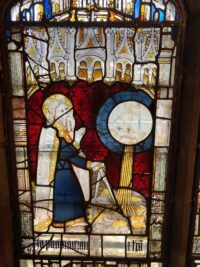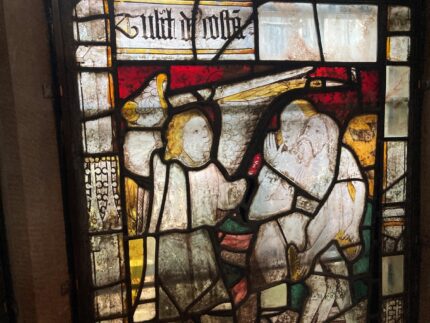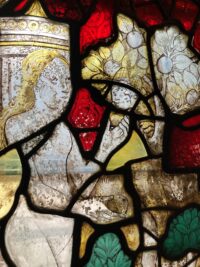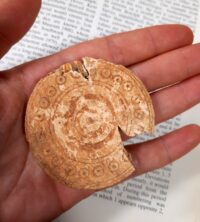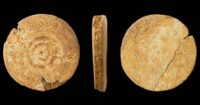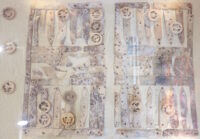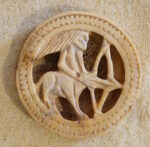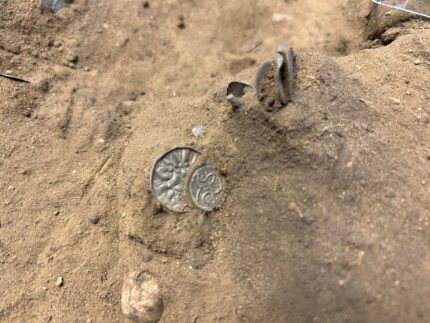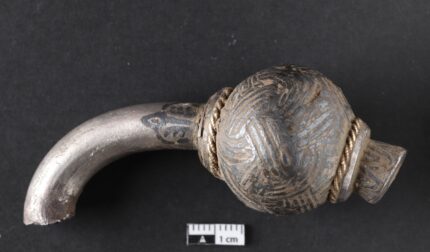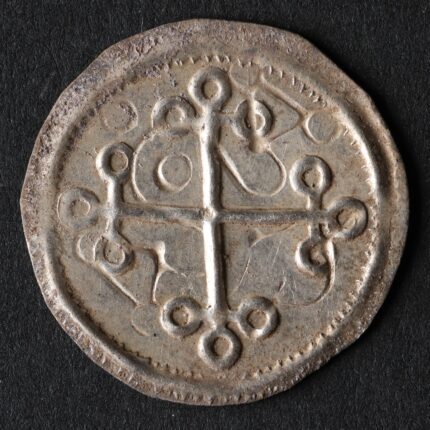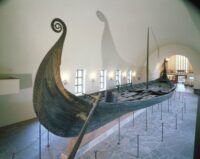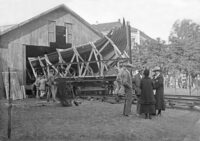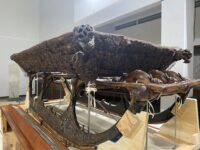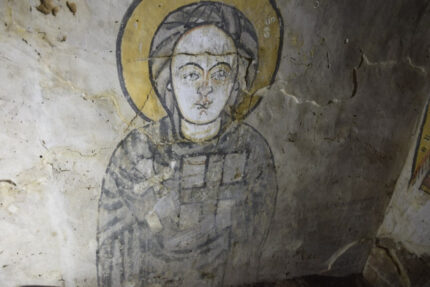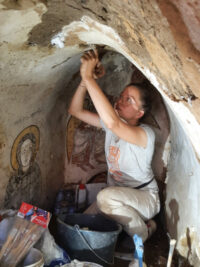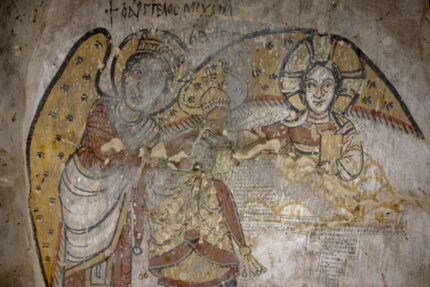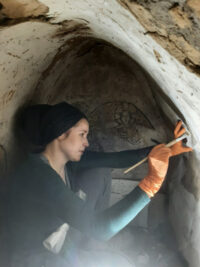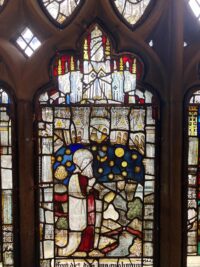 Great Malvern Priory has the largest and most complete collection of 15th century stained glass of any parish church in England. This period was the apex of English stained glass craftsmanship, and the Malvern medieval windows are some of very few of these masterpieces to survive the Dissolution of the Monasteries and the Puritan iconoclasm of the Commonwealth period.
Great Malvern Priory has the largest and most complete collection of 15th century stained glass of any parish church in England. This period was the apex of English stained glass craftsmanship, and the Malvern medieval windows are some of very few of these masterpieces to survive the Dissolution of the Monasteries and the Puritan iconoclasm of the Commonwealth period.
What religious conflict could not destroy centuries of water almost has. In 2015, experts at York Glaziers surveyed the medieval windows and determined they were in dire need of urgent intervention. The glass suffered extensive damage from moisture, both from the elements outside the priory and from condensation within which nourished algae growth as well. Because medieval glass had a high proportion of water-soluble potash, it is heavily susceptible to pitting that corrodes the painted surface. The corrosion products then stream down the glass and mix with dirt to form an ugly grey crust that then further erodes the painted glass.
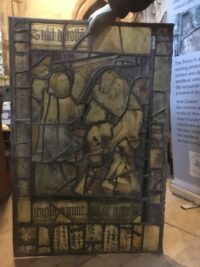 The three windows in St. Anne’s Chapel have suffered the heaviest damage because it is the dampest part of the church. Installed between 1470 and 1490, they were originally part of the six high clerestory windows on the south side of the priory’s nave. The windows narrate events from Genesis and Exodus, starting with the Creation. The central window depicts the stories of Noah and Abraham. The third window features scenes from the stories of Isaac, Joseph and Moses.
The three windows in St. Anne’s Chapel have suffered the heaviest damage because it is the dampest part of the church. Installed between 1470 and 1490, they were originally part of the six high clerestory windows on the south side of the priory’s nave. The windows narrate events from Genesis and Exodus, starting with the Creation. The central window depicts the stories of Noah and Abraham. The third window features scenes from the stories of Isaac, Joseph and Moses.
During a restoration program of the 1860s, 33 surviving panels of the original 72 were moved from the nave to St. Anne’s Chapel. They were re-leaded but not cleaned in 1910. Today circular pits dot the back side of the windows and show as a mottled grey texture on the painted figures of the interior surface. Thick corrosion crusts obscure the brilliant colors and painted features. Their relocation to the chapel put the windows much closer to eye level, which makes the fine details and vivid colors far more accessible to the viewer, but it also makes the damage unmistakable to the naked eye.
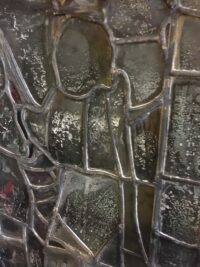 In 2021, the Friends of Malvern Priory, a charitable organization dedicated to the support of the great church, were able to raise the funds to embark on a restoration of the first St. Anne’s Chapel window, the Creation Window. This window depicts key scenes from the first three chapters of Genesis, from the Creation narrative through the expulsion from Eden.
In 2021, the Friends of Malvern Priory, a charitable organization dedicated to the support of the great church, were able to raise the funds to embark on a restoration of the first St. Anne’s Chapel window, the Creation Window. This window depicts key scenes from the first three chapters of Genesis, from the Creation narrative through the expulsion from Eden.
The first panel shows God as the great architect, holding a compass as he creates the universe. The next scene is the creation of the moon and stars, followed by the creation of birds and fish. Then comes the creation of animals. The creation of Adam and Eve in the Garden of Eden follows. In the next panel, God finds Adam and Eve covering their nakedness while the serpent uncoils from a tree trunk. The last scene shows an angel with a sword guarding the Eden as Adam and Eve are banished.
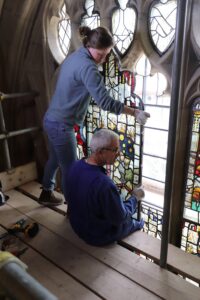 In order to fix the damage and prevent further deterioration in the long-term, the original windows were painstakingly removed from the stonework casing and transported to York for cleaning and repair. While conservators at York Glaziers worked on the fragile panes, cleaning, stabilizing and correcting damaged areas, new clear glass windows leaded with the same outlines of the medieval ones were installed on the exterior of the church.
In order to fix the damage and prevent further deterioration in the long-term, the original windows were painstakingly removed from the stonework casing and transported to York for cleaning and repair. While conservators at York Glaziers worked on the fragile panes, cleaning, stabilizing and correcting damaged areas, new clear glass windows leaded with the same outlines of the medieval ones were installed on the exterior of the church.
This environmental protective glazing system is the solution to the degradation of the potash in the medieval glass. Once conserved, the medieval windows were reinstalled on a bronze frame 30-40 mm inside the window casing from the exterior protective glass. This small gap allows air to circulate between the two windows and protects the medieval glass from condensation inside the church and the rain, wind and sun outside of it.
Work began in November of 2022, and now the Creation Window is back in place, its color and detail restored as close to its original glory as possible.
